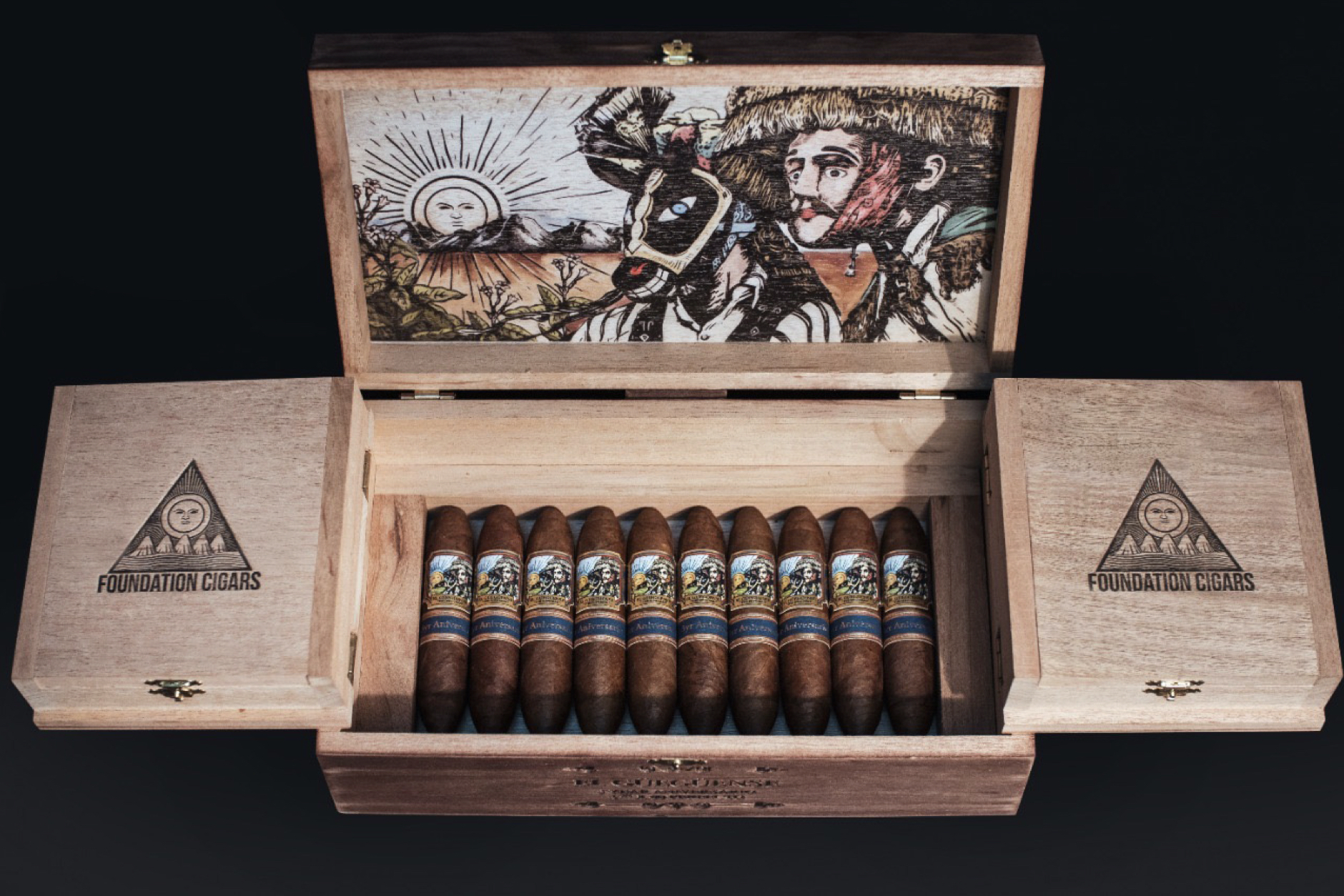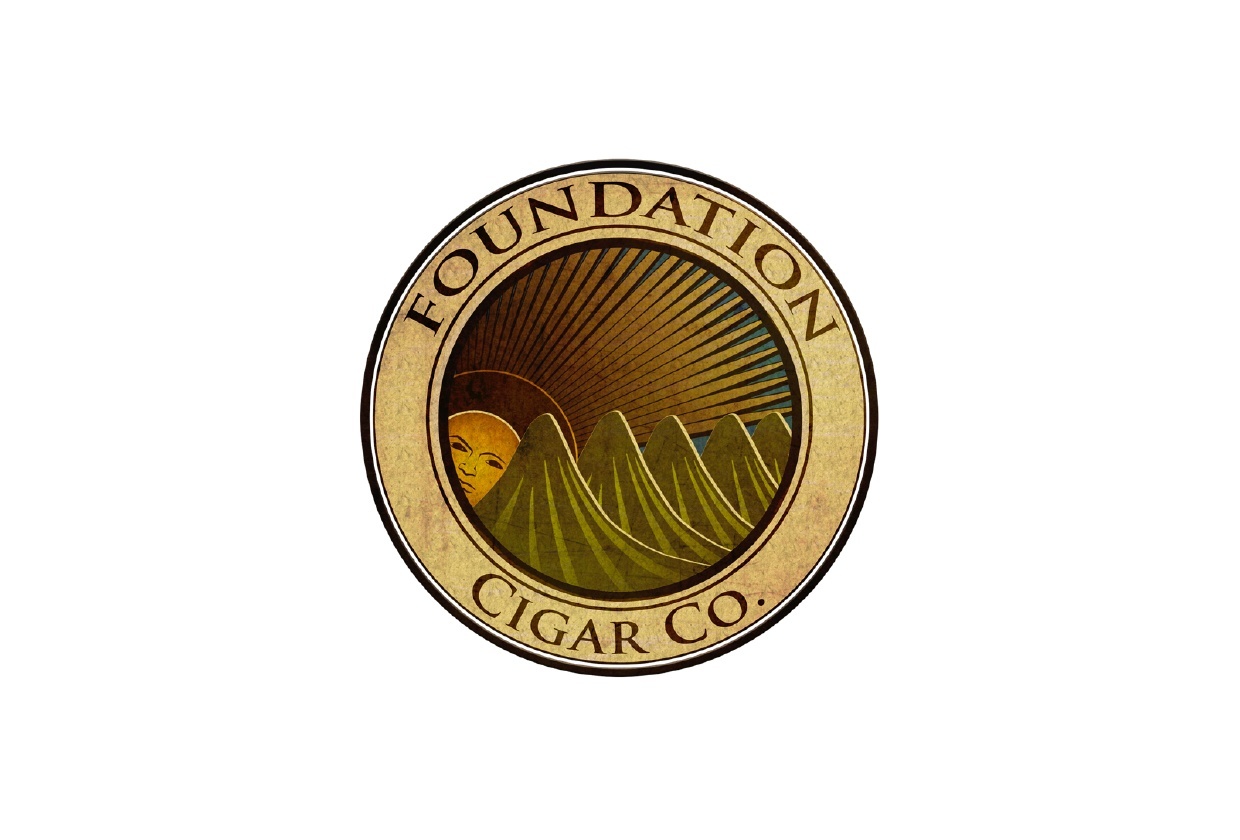If you are a cigar company celebrating an anniversary, it almost always means a new cigar to commemorate.
For Foundation Cigar Co., 2020 marked the fifth year since Nicholas Melillo started his own cigar company. In that short period of time, it’s become one of the more unique cigar companies—particularly new cigar companies—because of a number of factors. It starts and ends with Melillo himself, a former partner at Drew Estate who spent over a decade overseeing the company’s tobacco operations while it grew to become the largest factory in Nicaragua. There are other unique aspects like the company’s expansive portfolio, which even includes a line of infused cigars. I’d be remiss if I didn’t mention the fact that the company’s headquarters is located in a tobacco field in Connecticut.
Foundation’s fifth-anniversary cigar is a reference to its original release: El Güegüense. The appropriately named El Güegüense 5 Year Aniversario is a 4 3/4 x 60 perfecto that uses a Nicaraguan corojo 99 wrapper over a Mexican San Andrés binder and fillers from the Estelí and Jalapa regions of Nicaragua. It’s a similar ingredient list to the regular El Güegüense, though that cigar uses a Nicaraguan binder.
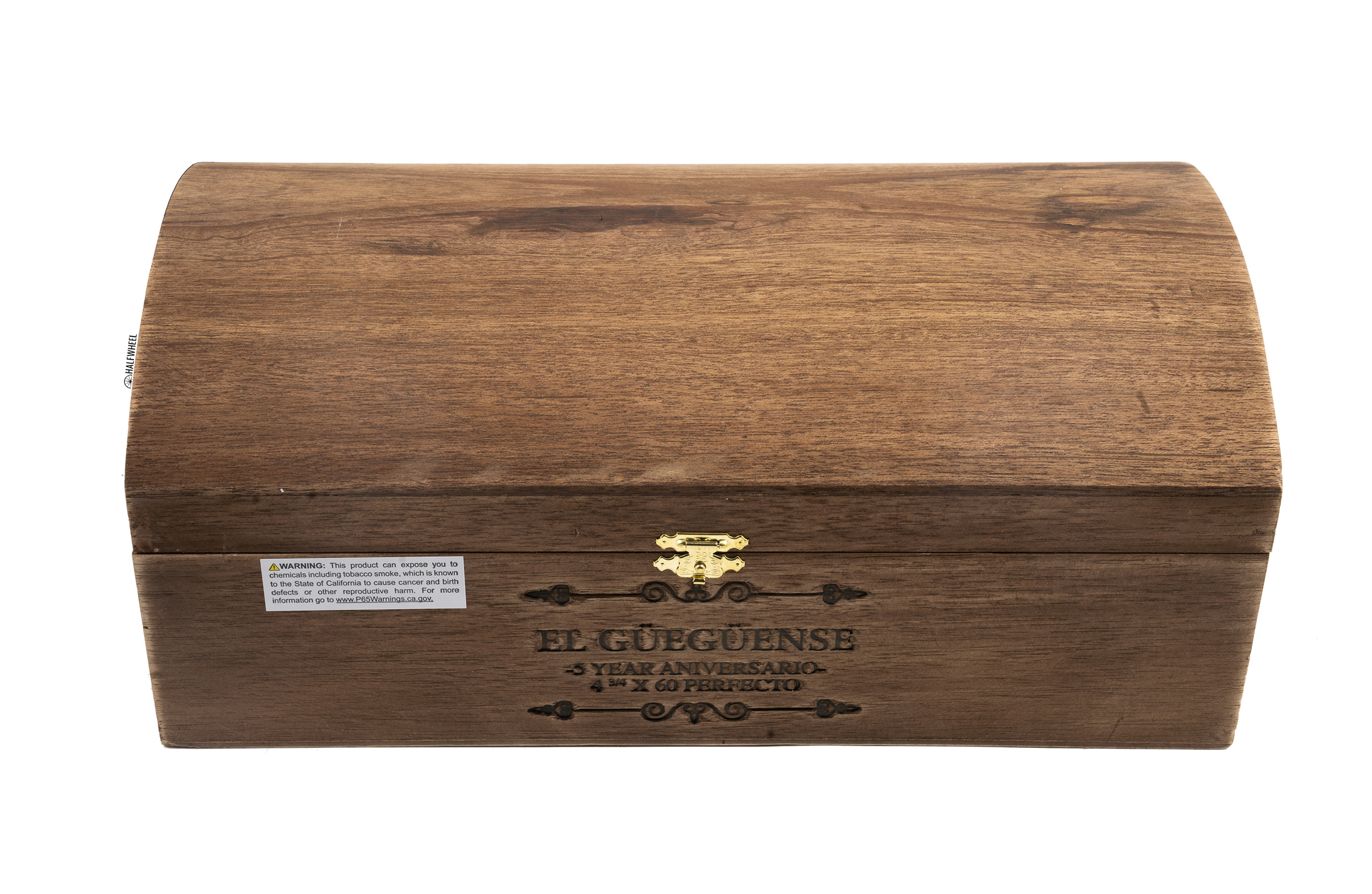
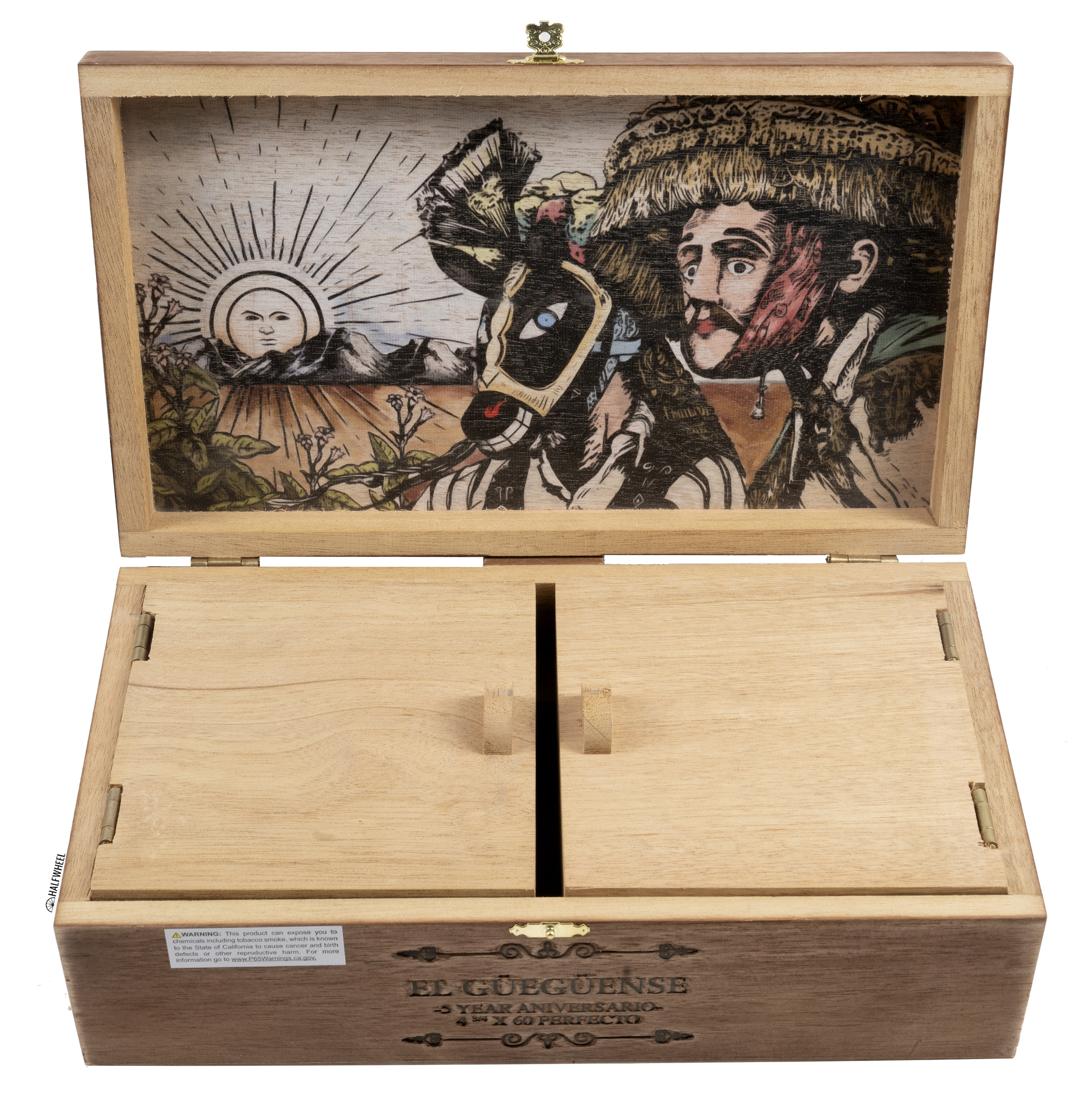


The El Güegüense 5 Year Aniversario comes in one of the more unique cigar boxes you will see. It’s shaped like a chest, though the interesting part is how the cigars are presented. Opening the box reveals two separate boxes that open like wings. Five cigars are stored in each of those wing-style boxes, while the bottom of the box holds 10 cigars.
Beyond that, there’s artwork that displays masked people, a nod to El Güegüense, a Nicaraguan folk play. The artwork was created by Thief Operandi, Foundation’s art director.
The release was limited to 500 boxes with MSRP set at $15 per cigar.
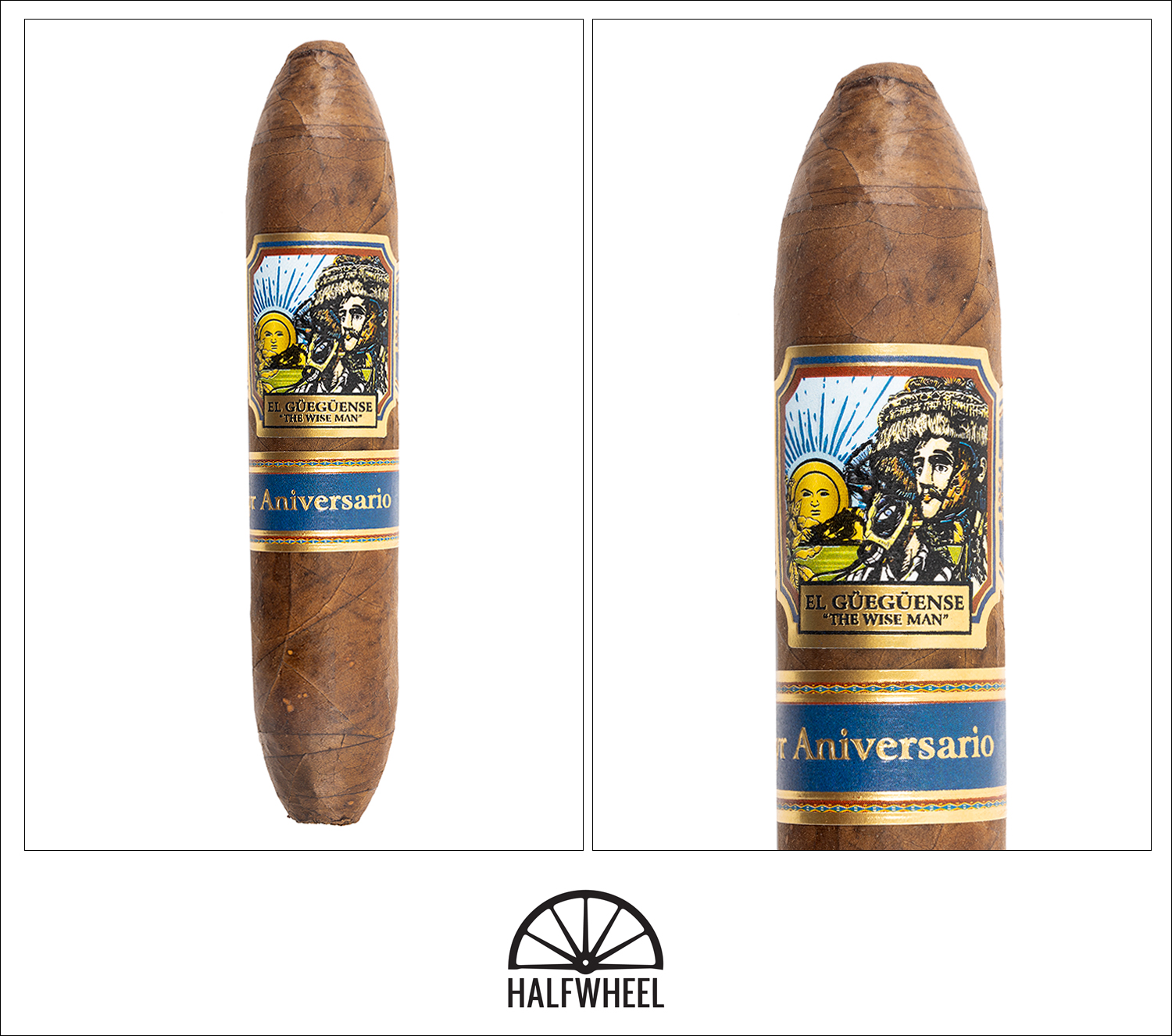
- Cigar Reviewed: El Güegüense 5 Year Aniversario
- Country of Origin: Nicaragua
- Factory: Tabacos Valle de Jalapa S.A.
- Wrapper: Nicaragua (Corojo 99)
- Binder: Mexico (San Andrés)
- Filler: Nicaragua (Estelí & Jalapa)
- Length: 4 3/4 Inches
- Ring Gauge: 60
- Vitola: Perfecto
- MSRP: $15 (Box of 20, $300)
- Release Date: September 2020
- Number of Cigars Released: 500 Boxes of 20 Cigars (10,000 Total Cigars)
- Number of Cigars Smoked For Review: 3
The first thing I notice is that the cigar appears to have a triple cap, which isn’t a common sight on figurado vitolas. Two of the three samples have slightly darker feet, I’m not sure if that’s an intentional feature or just a coincidence. I really like the way the band helps to bring out some of the reddish colors in the wrapper. Once removed from the cellophane, the cigar smells a bit like an old room filled with leather; there’s also barnyard, creaminess and some sweetness. The foot is much sweeter thanks to some aromas that smell like dark rum, though there’s also a bit of brown mustard from the bottom of the cigar. I’m surprised to find the cold draws to be a bit tight, but I pick up lots of banana nut bread over mustard, raisins and a bit of watered down lemonade.
While the cold draws were a bit tight, I am really surprised by just how tight the draw gets once the cigar is lit. Patrick Lagreid will sometimes equate the tightness of a cigar’s draw to sucking a milkshake through a straw; this is like sucking frozen ice cream through a straw. There’s not much smoke in the mouth, but I pick up some oak, leather and nuttiness. Because there’s not much smoke coming through the top of the cigar, I spend the first five minutes concerned that the cigar is going to go out. Eventually, it gets better, but it takes about a half-hour—almost clearing the tapered portion of the cigar—before the draw leaves the tight range. Unfortunately, it then shifts to an open draw and it almost seems like part of the cigar isn’t lit, even if a visual inspection says otherwise. As much as I’d like to say the flavor more than makes up for this, it doesn’t. There’s earthiness, cedar, creaminess, herbal flavors, black pepper and red pepper. It finishes with gritty earthiness, red pepper, burnt earth, cinnamon and paprika. Retrohales are sharper than the main flavor, providing earthiness, red pepper and cedar. The finish sees the cedar leave and just adds to more earthiness. Flavor and body are both full, strength is medium-full.
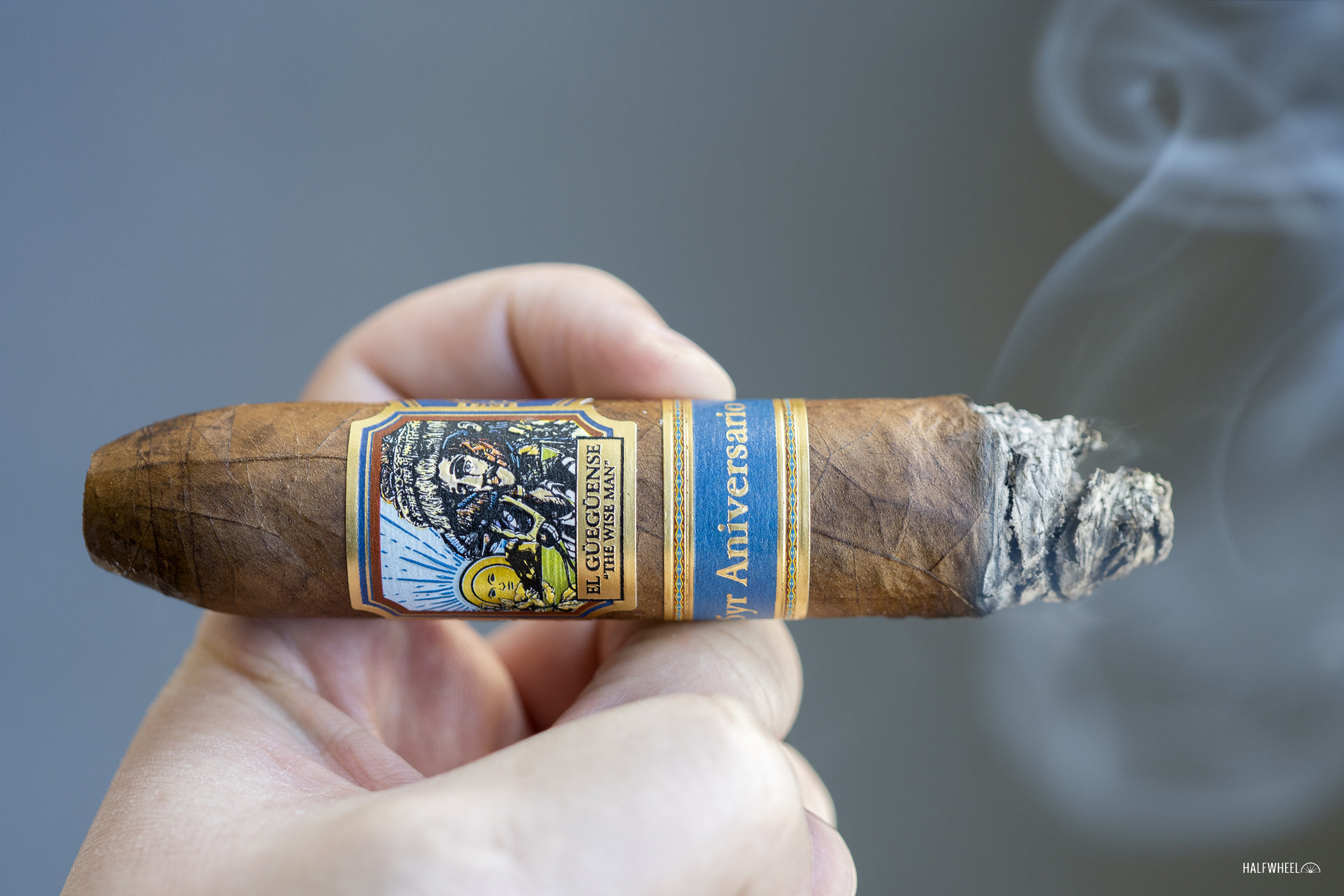
It takes about 90 minutes for me to get to the midway point—something I mark as the area of the cigar between the two bands—and things are better, but not great. Flavor-wise, it’s still largely a mixture of earthiness and toastiness, now joined by creaminess, a generic bread flavor and less pepper than before. The heat returns for the finish thanks to black pepper and paprika, which are joined by a very toasty earthiness, herbal flavors and some lemon. It’s a much toastier profile compared to what I taste when the smoke is still on my tongue. Retrohales have red pepper, creaminess, liquid smoke, earthiness and sourness. Once the smoke has left my nose, there’s a unique mixture of toasty earthiness, barbecue sauce, grains, saltiness, sourness and vanilla extract. Flavor is full, body is medium-full and strength is medium-full. I make a couple of touch-ups to help the smoke production, though I’m never sure the cigar is that close to going out. The larger issue is that I can’t get a desired amount of smoke in my mouth thanks to a draw that is now very open to the point where it constantly feels like one part of the cigar isn’t lit, even if the color of the bottom of the cigar suggests otherwise.
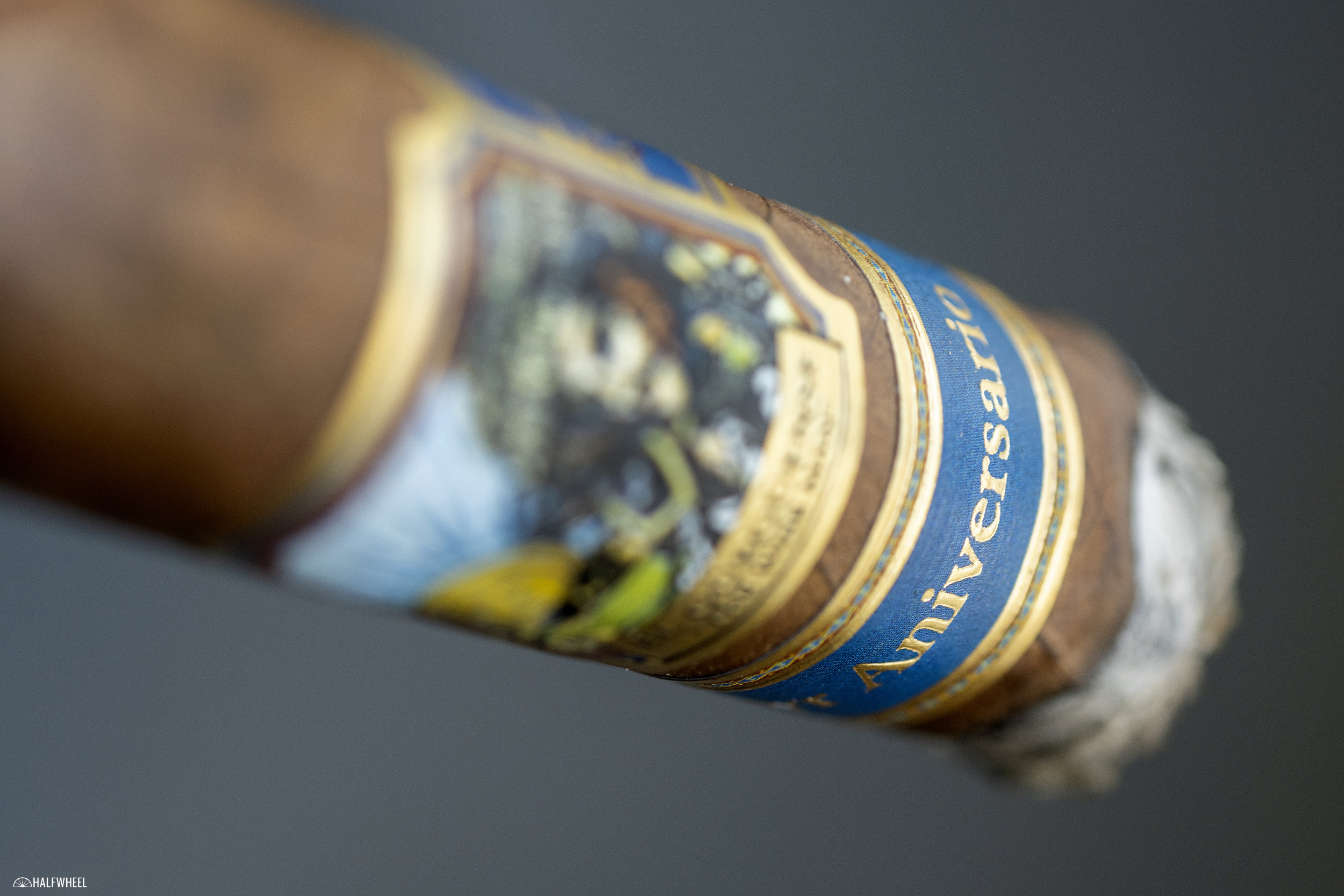
As the El Güegüense 5 Year Aniversario begins to burn closer to the tapered portion near the top of the cigar, things get a bit better. Flavor-wise, it’s similar with earthiness, toastiness, liquid smoke, leather and a bit of harshness. It seems like the flavors are a bit more isolated from one another, which is better, albeit still not great. The finish has lots of gritty earth sensations over black pepper and leather. Retrohaling seems to increase the amount of grittiness and liquid smoke, though I can taste faint hints of a sugar sweetness and rice cakes. The finish of the retrohale has a slightly more refined earthiness joined by creaminess and leather. Flavor finishes medium-full, body is full and strength is getting close to full. Construction is a bit better, particularly once the cigar gets closer to the one-and-a-half inch mark, but touch-ups are still needed to help the smoke production.
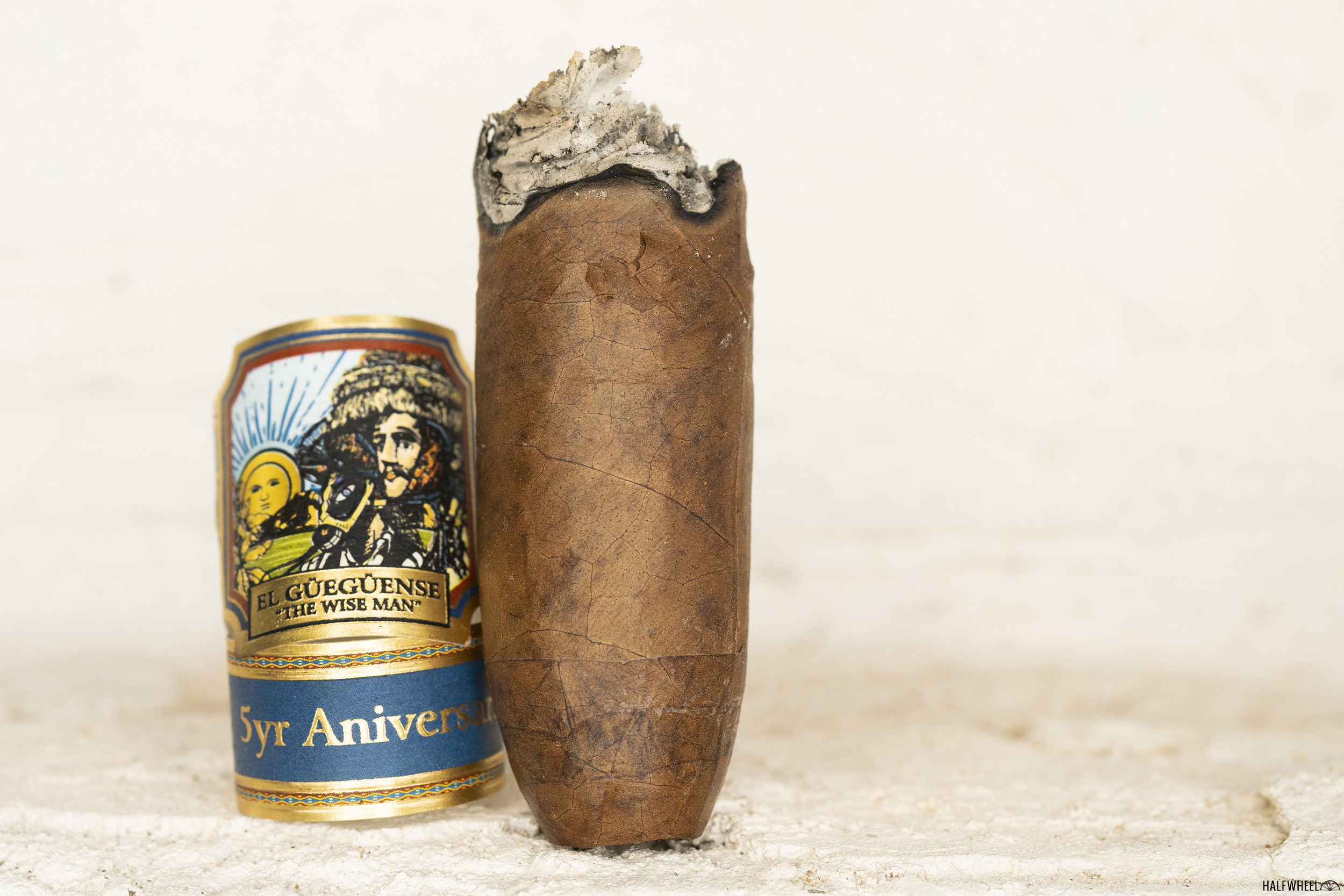
Final Notes
- While I try to avoid mentioning Drew Estate when writing reviews of Dunbarton Tobacco & Trust or Foundation reviews, it should be noted this is a very similar shape to Drew Estate’s Flying Pig size, itself a copy of an old Dunhill size. This is longer and lacks the signature pigtail, but the shape seems to be more or less the same as the Flying Pig with slightly more exaggerated tapers.
- I’m a fan of the regular, big salomones vitola, but these shorter, fat perfecto sizes have never been something I’ve enjoyed. I don’t know if it’s just a personal preference issue or perhaps the way the size reacts to the pace that I like to smoke cigars at, but I’ve always found it to be awkward. Fortunately, this is just long enough that it avoids the issue where Flying Pigs feel awkward in my hands, but the end result wasn’t much better.
- We score the construction of cigars based on three categories—whether the cigar requires relights to help keep it burning properly, the draw, and the smoke production—in each of the three thirds, plus appearance. Out of the categories that are evaluated during each third—burn, draw, smoke production—this cigar lost points in eight of the nine categories on average. It wasn’t a plugged cigar—though the first 10 minutes certainly made it seem like it—but it was a cigar that struggled in just about every construction category from start to finish.
- This tasted like a cigar that had gone out a handful of times. It wasn’t as bitter as many cigars taste like after going out three or four times, but the individual flavors were quite similar. That being said, none of the three cigars I smoked ever went or ever really seemed close to going out, I just had issues getting the smoke all the way up the cigar.
- This release placed #6 on halfwheel’s Packaging Awards for 2020. The box is outstanding and it really looks like a treasure chest. Once opened, it reveals artwork by Thief Operandi and one of the more unique ways to package cigars. If it seems familiar, Foundation did something similar for its Chest Collector Humidor release in 2017, though the 2020 version is a bit more interesting to me thanks to the shape.
- There’s a part of me that wonders if this is just how cigars of this shape are going to smoke. As such I’d be fascinated to learn about the physics of it because I’m pretty convinced that something happens to the construction of the tobacco that isn’t common on most other cigars.
- I tried smoking this quicker and that didn’t make things much better. The smoke production was better, but the flavor profile suffered so I slowed down. I still ended up smoking this quicker than most cigars—smoking at slightly less than one puff per minute—and this took two hours and 30 minutes to smoke.
- Cigars for this review were purchased by halfwheel.
This is a cigar that tests our scoresheet because it produces a number that isn't representative of what took place. While the construction was problematic, the flavor profile was never bad, it just wasn’t great. The way our scoresheet is designed, cigars like this oftentimes score better than I might have personally enjoyed it, and I think that’s likely the case here. It starts and ends with the size, which I find to be problematic and overwhelming. It's not overwhelming like a 7 x 70—though I probably would have enjoyed this blend in a 7 x 70 more than I did here—but it just encompasses every part of the time I spent smoking the cigar. It's a rare instance in which this review is a referendum on a cigar's construction, but probably not an indictment of how well it was rolled or bunched. And because of the design of the cigar, I'm led to believe that no matter how well it was bunched, how much I cut off, or how quickly I smoked—the struggle is going to be very real.

